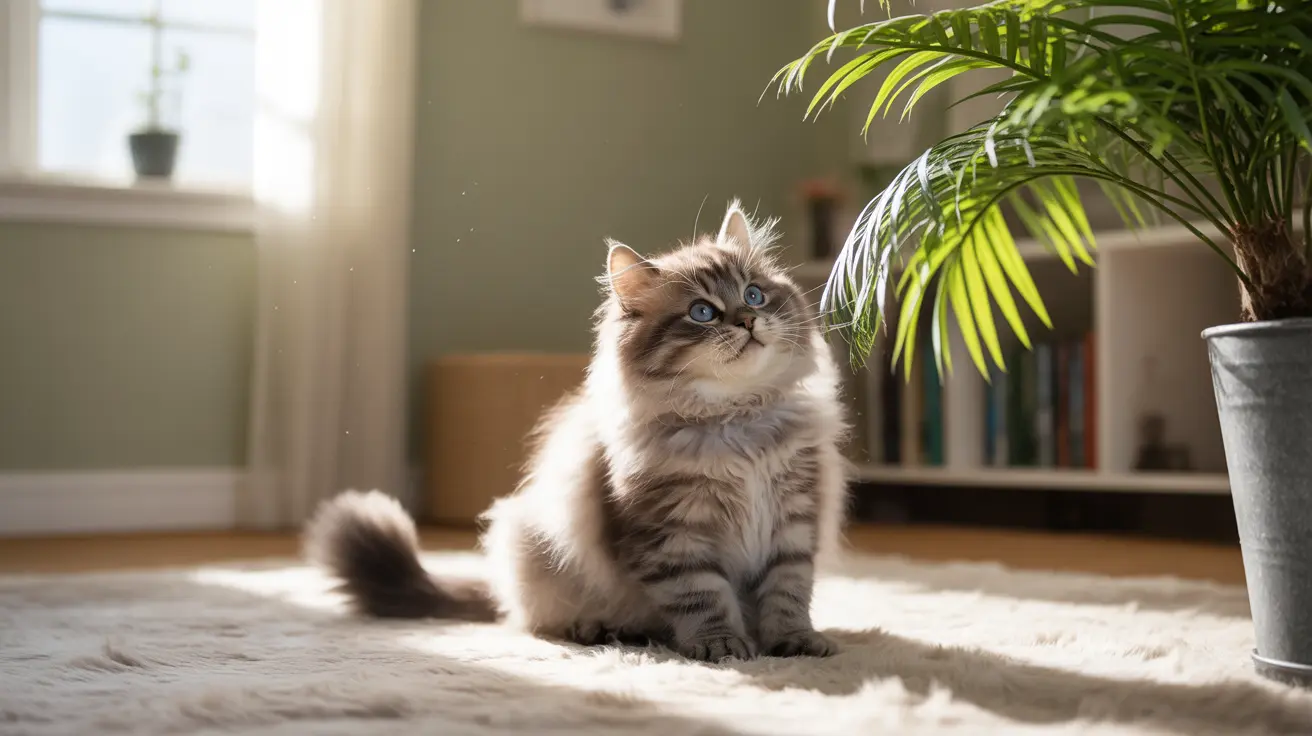Introduction
If you're a cat parent who loves incorporating greenery into your home decor, you've likely wondered about cat palm safety for your feline friends. The good news is that cat palm (Chamaedorea cataractarum) is considered non-toxic to cats, making it an excellent choice for pet-friendly households. However, there are still important considerations to keep in mind when bringing this tropical beauty into your home.
In this comprehensive guide, we'll explore everything you need to know about cat palms and their relationship with our feline companions, including safety measures, identification tips, and best practices for keeping both your plants and pets healthy.
Understanding Cat Palm Safety
Cat palm has been officially recognized as non-toxic by the ASPCA and other veterinary organizations. Unlike some other palm varieties, such as the dangerous sago palm, cat palm doesn't contain any toxic compounds that could harm your feline friend.
However, while the plant isn't poisonous, excessive consumption can still lead to minor digestive issues. This is similar to how cats might experience mild stomach upset from eating too much grass or other safe plants.
Identifying True Cat Palms
Cat palm features distinctive arching, feather-like fronds that grow from clustered stems. The plant typically reaches heights of 4-6 feet when grown indoors. Its graceful appearance makes it a popular choice for creating tropical ambiance in homes.
It's crucial to properly identify cat palm, as it can be confused with other palm-like plants. The true cat palm (Chamaedorea cataractarum) has:
- Bright green, pinnate leaves
- Multiple slender stems
- Compact growth habit
- Soft, non-sharp fronds
Best Practices for Cat-Friendly Environments
Even though cat palm is safe, it's important to create an environment that discourages excessive plant consumption:
- Position plants strategically away from favorite cat perches
- Provide alternative cat-safe grasses for chewing
- Use deterrent sprays if necessary
- Monitor your cat's interaction with the plant
- Keep the area around the plant clean and free of fallen leaves
Maintaining Healthy Plants and Happy Cats
A well-maintained cat palm is less likely to attract unwanted attention from your pet. Follow these care guidelines:
- Place in bright, indirect light
- Maintain consistent soil moisture
- Provide adequate humidity
- Regular pruning of damaged fronds
- Check for pests regularly
Signs of Plant-Related Issues
While cat palm is non-toxic, watch for these signs that might indicate your cat has consumed too much of the plant:
- Mild vomiting or diarrhea
- Temporary loss of appetite
- Excessive drooling
- Increased water consumption
These symptoms typically resolve on their own but consult your veterinarian if they persist or worsen.
Frequently Asked Questions
Is cat palm safe for cats to have around the house?
Yes, cat palm is confirmed safe for cats by the ASPCA. While consumption should be minimized, the plant contains no toxic compounds that could harm your pet.
What should I do if my cat eats a lot of cat palm leaves?
Monitor your cat for signs of digestive upset. Most cases resolve naturally, but contact your vet if symptoms persist or your cat shows signs of distress. Prevent future access by relocating the plant or using deterrent methods.
How can I tell the difference between cat palm and toxic palms like sago palm?
Cat palm has soft, feathery fronds growing from multiple thin stems, while sago palm has stiffer, more prehistoric-looking leaves growing from a single thick trunk. When in doubt, consult a plant expert for proper identification.
Are there any health risks if my cat chews on cat palm frequently?
While not toxic, frequent chewing can cause mild digestive upset and potentially lead to choking hazards. It's best to discourage regular consumption through preventive measures.
How can I keep my cat from damaging or eating my cat palm plant?
Use deterrent sprays, provide alternative cat grasses, place the plant out of reach, and ensure your cat has plenty of environmental enrichment to prevent boredom-based plant chewing.
Conclusion
Cat palm offers a perfect blend of tropical beauty and pet safety for cat owners. While the plant poses no toxic threat to your feline friends, responsible placement and monitoring ensure both your cats and plants can thrive together in harmony. By following the guidelines outlined in this article, you can confidently enjoy this elegant houseplant while keeping your furry family members safe and healthy.






